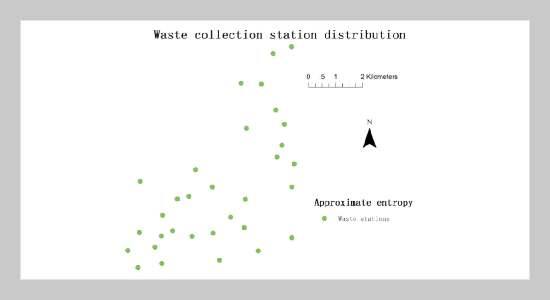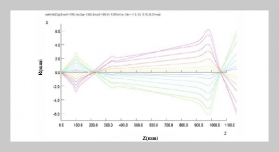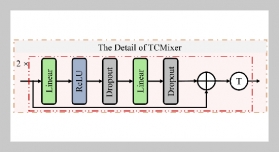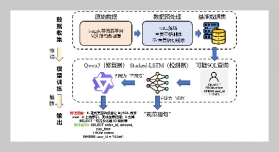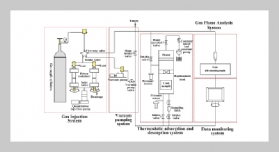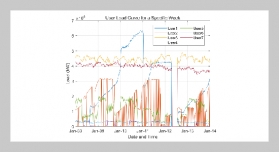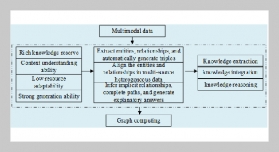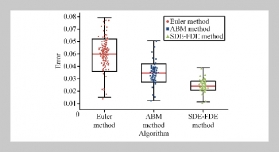REFERENCES
- [1] Dong, S. C., Kurt, W. T. and Wu, Y. P., “Municipal Solid Waste Management in China: Using Commercial Management to Solve a Growing Problem,” Utilities Policy, Vol. 10, No. 1, pp. 7�11 (2001). doi: 10.1016/s0957-1787(02)00011-5
- [2] Cheng, H. F., Zhang, Y. G., Meng, A. H. and Li, Q. H., “Municipal Solid Waste Fueled Power Generation in China: A Case Study of Waste-to-Energy in Changchun City,” Environmental Science & Technology, Vol. 41, No. 21, pp. 7509�7515 (2007). doi: 10.1021/es 071416g
- [3] Wang, H. T. and Nie, Y. F., “Municipal Solid Waste Characteristics and Management in China,” Journal of the Air & Waste Management Association, Vol. 51, No. 2, pp. 250�263 (2001). doi: 10.1080/10473289. 2001.10464266
- [4] Zhang, D. Q., Tan, S. K. and Gersberg, R. M., “Municipal Solid Waste Management in China: Status, Problems and Challenges,” Journal of Environmental Management, Vol. 91, No. 8, pp. 1623�1633 (2010). doi: 10.1016/j.jenvman.2010.03.012
- [5] Zhuang, Y., Wu, S. W., Wang, Y. L., Wu, W. X. and Chen, Y. X., “Source Separation of Household Waste: A Case Study in China,” Waste Management, Vol. 28, No. 10, pp. 2022�2030 (2008). doi: 10.1016/j.wasman. 2007.08.012
- [6] Yearbook, Guangzhou, Guangzhou Yearbook Press (2012). Information on http://data.gzstats.gov.cn/ gzStat1/chaxun/njsj.jsp
- [7] Lee, J. J., Dynamic Characteristics of Municipal Solid Waste (MSW) in the Linear and Nonlinear Strain Ranges, Ph. D. Desertation, The University of Texas at Austin, Texas, U.S.A. (2008).
- [8] Dyson, B. and Chang, N. B., “Forecasting Municipal Solid Waste Generation in a Fast-Growing Urban Region with System Dynamics Modeling,” Waste Management, Vol. 25, No. 7, pp. 669�679 (2005). doi: 10.1016/j.wasman.2004.10.005
- [9] Navarro-Esbr, J., Diamadopoulos, E. and Ginestar, D., “Time Series Analysis and Forecasting Techniques for Municipal Solid Waste Management,” Resources, Conservation and Recycling, Vol. 35, No. 3, pp. 201� 214 (2002). doi: 10.1016/s0921-3449(02)00002-2
- [10] Noori, R., Karbassi, A. and Salman, M. S., “Evaluation of PCA and Gamma Test Techniques on ANN Operation for Weekly Solid Waste Prediction,” Journal of Environmental Management, Vol. 91, No. 3, pp. 767�771 (2010). doi: 10.1016/j.jenvman.2009.10.007
- [11] Zade, M. J. G. and Noori, R., “Prediction of Municipal Solid Waste Generation by Use of Artificial Neural Network: A Case Study of Mashhad,” International Journal of Environmental Research, Vol. 2, No. 1, pp. 13�22 (2008). doi: 10.1002/ep.10317
- [12] Gilroy, K. L., The Effect of Hydrologic Model and Data Complexity on Water Quantity and Quality Prediction Accuracy, M.S. Civil Engineering, University of Maryland, Washington, U.S.A. (2008).
- [13] Hunsaker, C. T., Goodchild, M. F., Friedl, M. A. and Case, T. J., Spatial Uncertainty in Ecology: Implications for Remote Sensing and GIS Applications, 1st ed., Springer, New York, pp. 50�52 (2001).
- [14] Charney, J. C., Halem, M. and Jastrow, R., “Use of Incomplete Historical Data to Infer the Present State of the Atmosphere,” Journal of the Atmospheric Sciences, Vol. 26, No. 5, pp. 1160�1163 (1969). doi: 10.1175/1520-0469(1969)0262.0.co;2
- [15] Torres, M. E. and Gamero, L. G., “Relative Complexity Changes in Time Series Using Information Measures,” Physica A: Statistical Mechanics and Its Applications, Vol. 286, No. 3, pp. 457�473 (2000). doi: 10.1016/s0378-4371(00)00309-5
- [16] Wolf, A., Swift, J. B., Swinney, H. L. and Vastano, J. A., “Determining Lyapunov Exponents from a Time Series,” Physica D: Nonlinear Phenomena, Vol. 16, No. 3, pp. 285�317 (1985). doi: 10.1016/0167-2789 (85)90011-9
- [17] Li, S. C., Zhou, Q. F. Z., Wu, S. H. and Erfu, D., “Measurement of Climate Complexity Using Sample Entropy,” International Journal of Climatology, Vol. 26, No. 1, pp. 2131�2139 (2006). doi: 10.1002/joc.1357
- [18] Li, S. C, Liu, F. Y. and Zhao, Z. Q., “Climate Complexity and Spatial Variation in China,” Climatic and Environmental Research, Vol. 13, No. 1, pp. 2131�2139 (2008).
- [19] Alavi, N., Goudarzi, G., Babaei, A. A., Jaafarzadeh, N. and Hosseinzadeh, M., “Municipal Solid Waste Landfill Site Selection with Geographic Information Systems and Analytical Hierarchy Process: A Case Study in Mahshahr County, Iran,” Waste Management & Research, Vol. 31, No. 1, pp. 98�105 (2013). doi: 10. 1177/0734242X12456092
- [20] Arribas, C. A., Blazquez, C. A. and Lamas, A., “Urban Solid Waste Collection System Using Mathematical Modelling and Tools of Geographic Information Systems,” Waste Management & Research, Vol. 28, No. 4, pp. 355�363 (2010). doi: 10.1177/0734242X0935 3435
- [21] Pincus, S. M. and Viscarello, R. R., “Approximate Entropy: A Regularity Measure for Fetal Heart Rate Analysis,” Obstetrics & Gynecology, Vol. 79, No. 2, pp. 249�255 (1992).
- [22] Pincus, S. M., “Greater Signal Regularity may Indicate Increased System Isolation,” Mathematical Biosciences, Vol. 122, No. 2, pp. 161�181 (1994). doi: 10.1016/0025-5564(94)90056-6
- [23] Pincus, S., “Approximate Entropy (ApEn) as a Complexity Measure,” Chaos: An Interdisciplinary Journal of Nonlinear Science, Vol. 5, No. 1, pp. 110�117 (1995). doi: 10.1063/1.166092
- [24] Pincus, S. and Kalman, R. E., “Irregularity, Volatility, Risk, and Financial Market Time Series,” Proceedings of the National Academy of Sciences of the United States of America, U.S.A., Sep. 21, pp. 13709�13714 (2004). doi: 10.1073/pnas.0405168101
- [25] MacQueen, J., “Some Methods for Classification and Analysis of Multivariate Observations,” Proceedings of the Fifth Berkeley Symposium on Mathematical Statistics and Probability, California, U.S.A, June 21� July 18, p. 14 (1965).
- [26] Kanungo, T., Mount, D. M., Netanyahu, N. S., Piatko, C. D., Silverman, R. and Wu, A. Y, “An Efficient K-Means Clustering Algorithm: Analysis and Implementation,” Pattern Analysis and Machine Intelligence, IEEE Transactions on, Vol. 24, No. 7, pp. 881�892 (2002). doi: 10.1109/TPAMI.2002.1017616
- [27] Jain, A. K., Duin, R. P. W. and Mao, J., “Statistical Pattern Recognition: A Review,” Pattern Analysis and Machine Intelligence, IEEE Transactions on, Vol. 22, No. 1, pp. 4�37 (2000). doi: 10.1109/34.824819
- [28] Wu, X., Kumar, V., Quinlan, J. R., Ghosh, J., Yang, Q., Motoda, H., ... and Steinberg, D., “Top 10 Algorithms in Data Mining,” Knowledge and Information Systems, Vol. 14, No. 1, pp. 1�37 (2008). doi: 10.1007/s10115- 007-0114-2
- [29] Mandelbrot, B., Statistical Methodology for Nonperiodic Cycles: From the Covariance to Rs Analysis, 1st ed., In Annals of Economic and Social Measurement, U.S.A., pp. 259�290 (1972).
- [30] Song, J. W., Xiang, B., Wang, X. Y., Wu, L. and Chang, C., “Application of Dynamic Data Driven Application System in Environmental Science,” Environmental Reviews, Vol. 22, pp. 287�297 (2014). doi: 10.1139/er-2013-0071


